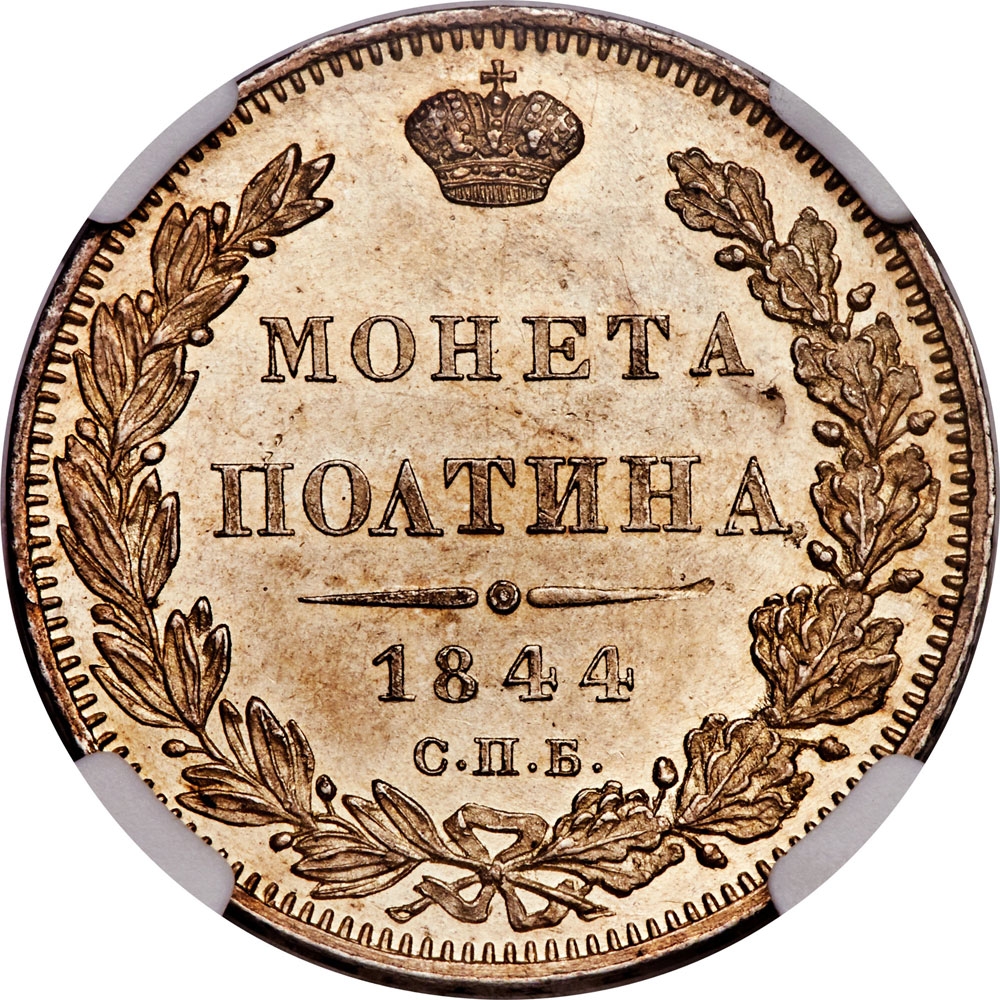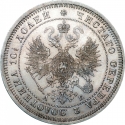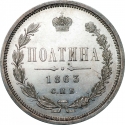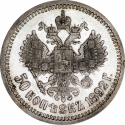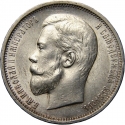You are about to finish your registration. Please check your mailbox (including spam folder). There should be a letter with a confirmation link. Check setting to make sure that your e-mail address is correct.
Send letter againDescription
In the 18th, 19th and 20th centuries 50 Kopecks had individual names Poltina or Poltinnik.
This coin has been unchanged during the reigns of the following Russian Emperors:
Nicholas I (1796–1855) was the Emperor of Russia from 1825 until 1855. He was also the King of Poland and Grand Duke of Finland. He is best known as a political conservative whose reign was marked by geographical expansion, repression of dissent, economic stagnation, poor administrative policies, a corrupt bureaucracy, and frequent wars that culminated in Russia's disastrous defeat in the Crimean War of 1853-56. His reign had an ideology called "Official Nationality" that was proclaimed officially in 1833. It was a reactionary policy based on orthodoxy in religion, autocracy in government, and Russian nationalism.
Alexander II (1818-1881) was the Emperor of Russia from 1855 until his assassination in 1881. He was also the King of Poland and the Grand Duke of Finland. Alexander was the most successful Russian reformer since Peter the Great. His most important achievement was the emancipation of serfs in 1861, for which he became known as Alexander the Liberator. In foreign policy, Alexander sold Alaska to the United States in 1867. Among his greatest domestic challenges was an uprising in Poland in 1863, to which he responded by stripping that land of its separate Constitution and incorporating it directly into Russia.
Obverse

|
Depicts the lesser coat of arms of the Russian Empire with mintmark below in a circle, surrounded by the fine weight: "Pure silver 2 zolotniks 10 1/2 parts". К Б |
|---|---|
Reverse

|
Denomination COIN RUBLE in the center, date and the mint mark below. Wreath of laurel (victory) and oak (strength) around. Russian imperial crowns on the top. МОНЕТА |
| Edge |
Silver • Fineness 83 1/3 2 zolotniks • 41 7/25 parts CEP • 83 1/3 ПРОБЫ 4 ЗОЛ • 82 14/25 ДOЛИ |

